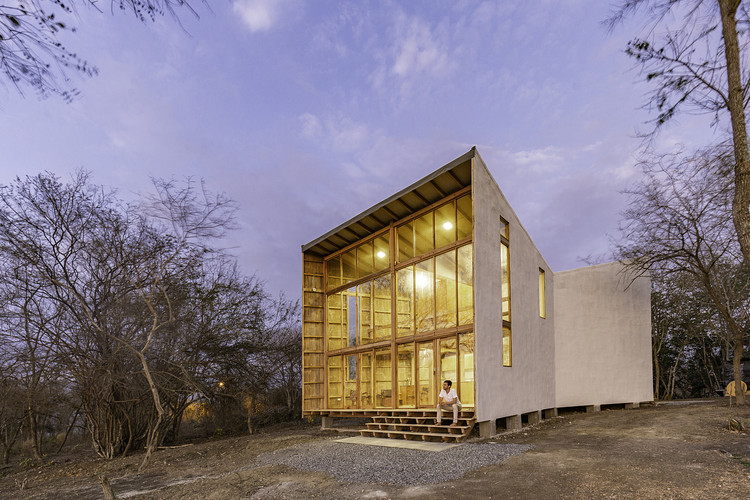177 Social Housing In Vitoria Matos
2014-03-06 01:00
© Hisao Suzuki
(3)铃木久雄(Hisao Suzuki)


架构师提供的文本描述。这个块的比例很高。九层楼对院落的面积来说太大了。第一项决定是设法使建筑的最大部分与最大的围护结构相适应:结果是在街道的每个立面上都有一个1.5米的悬臂,后面的建筑允许房屋内的交叉通风。第二个决定是打破封闭街区庭院的想法,在与正方形接触的部分分离曲线对齐的体积。
Text description provided by the architects. The proportion of the block is very upright. Nine floors are too many for the dimensions of the courtyard’s block. The first decision is to try to fluff up the maximum part of building adapting it to the maximum envelope possible: the result is a cantilever of 1.5m in every façade of the street, with the back of building allowing cross ventilation in the housing. The second decision is breaking the idea of a closed block courtyard and detaching the volume of the curve alignment in the section that is in contact with square.
© Hisao Suzuki
(3)铃木久雄(Hisao Suzuki)


我们的建议试图避免立即解决一个街区作为一个连续和封闭的九层环。我们打算在其中引入开放式街区的精神,即面对、接近或重叠界定空间而不是锁定空间的建筑;创建一个向街道开放并与之融合的中央庭院,改善庭院和住宅内部的生活条件;并使庭院内的景观更容易捕捉到地平线的碎片。
Our proposal attempts to escape the immediate solution of a block as a continuous and closed nine-storey ring. We intend to introduce into it the spirit of the open block, buildings that confront, approach or overlap defining spaces but not locking them; to create a central courtyard that opens to the street and merges with it, improving the living conditions of both courtyard and interior of the housing; and to make easier the view from inside the courtyard to catch a fragment of the horizon.
© Hisao Suzuki
(3)铃木久雄(Hisao Suzuki)


这块地块的上部是支离破碎的,由四个身体组成。三个直线棱镜和一个塔依靠在一个三层的桥墩上.每个身体的不同颜色都强调由独立元素组成的整体的概念。维托利亚的天气又湿又冷。这条街最大的光圈是在南面,允许阳光照射到院子里。室外空间偷偷地进入中央庭院拥抱塔,并从相反的角落通过分隔线块。凝视就像微风从院子里飘出来一样。
The block is fragmented in its upper part making up four bodies. Three linear prisms and a tower are relying over a three-storey plinth. The different colours of each body emphasize on the idea of a whole made of independent elements. Vitoria has a wet and cold weather. The biggest aperture to the street is carried out in the south façade allowing sunlight to the courtyard. The outdoor space sneaks into the central courtyard hugging the tower, and runs away the opposite corners through the separations between linear blocks. The gaze just as the breeze escapes from the inside of the courtyard.
© Hisao Suzuki
(3)铃木久雄(Hisao Suzuki)


门面采用较低楼层的陶瓷片和上部的轻质面板通风。在这两种情况下,我们都是在伪装的理念下工作的。在较低的楼层,一个像素的效果,几乎整个陶瓷作品的颜色目录,溶解了她的窗口轮廓。在上面的块,百叶窗,这是相同的材料和颜色的外观,打开发现洞,并关闭他们隐藏。因此,房屋日夜日照和室内活动都会发生变化。
The façades are ventilated with ceramic pieces in lower floors and lightweight panels in upper floors. In both cases, we worked under the idea of camouflage. In lower floors, a pixelling effect, using almost the whole ceramic piece’s catalogue of colour, dissolve she outline of the windows. In upper blocks, shutters, that are the same material and colour of the façade, open up discovering holes, and close hiding them. Thereby, the houses change over day, night, sun and interior activity.
Plan 1-2-3
[地名] [西班牙] 普兰 1-2-3




























Architects Matos-Castillo Arquitectos
Location Bulevar de Salburua Kalea, Vitoria-Gasteiz, Álava, Spain
Category Social Housing
Architects in Charge Beatriz Matos Castaño, Alberto Martínez Castillo
Area 32470.0 m2
Year 2007
Photographs Hisao Suzuki
























